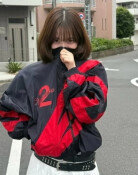A child in basement
A child in basement
Posted March. 31, 2021 07:23,
Updated March. 31, 2021 07:23

Ivan in Fyodor Dostoevsky’s novel “The Brothers Karamazov” asks the following question: what would happen if one’s happiness requires somebody else’s sacrifice as a precondition? For example, can one accept a society in which a child needs to be tortured to death to ensure the majority people are full, happy, and peaceful? Master of fantasy literature Ursula Le Guin depicts such an existential situation in “The Ones Who Walk Away from Omelas,” which was obviously influenced by Dostoevsky.
The background of the novel is Omelas, a city filled with happiness. Almost everything is perfect, from elegant buildings and touching music to extravagant festivals. However, there is a rigorous and absolute condition for the city to maintain its happiness. It is that a child needs to suffer extreme neglect in a basement. Nobody can be kind to the child, and no one understands why such a requirement exists. They simply were thrown into their existence as philosopher Martin Heidegger said.
The child who suffers pain in the windowless dirty basement looks about six years old when in fact he is almost 10 due to malnutrition and neglect. Every citizen of Omelas knows about the child. Some have gone to see the child in person while others have heard of him. They could bring the child out of the basement and bathe and make the child comfortable, but they would have to give up on the prosperity, beauty, and joy they have been enjoying. Therefore, most people knowingly look away from the terrible stuff that happens in the basement. It is inevitable for the majority’s benefits. A small number of people – mostly those who are young – are sickened with the terrible irony and choose to leave the city.
Le Guin’s allegorical novel throws readers into an uncomfortable question. How would you accept it if the majority’s happiness requires the minority’s misery as a prerequisite? Who does the child in the basement symbolize? Who represents the child’s, the minority’s wound, pain, and tear?



![[송평인 칼럼]‘계륵 장군’ 이준석](https://dimg.donga.com/c/138/175/90/1/wps/NEWS/IMAGE/2025/05/28/131706374.1.png)



